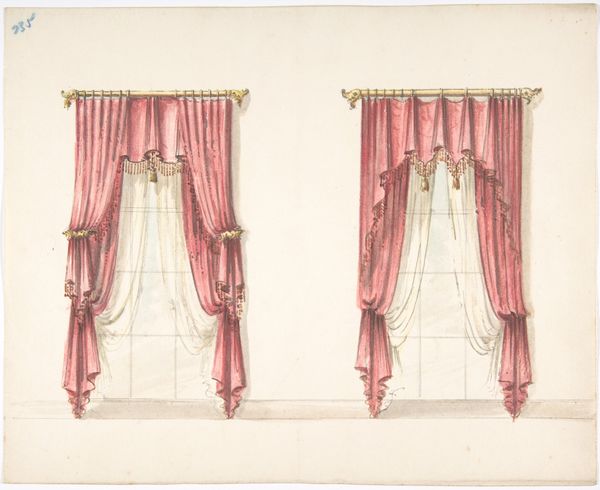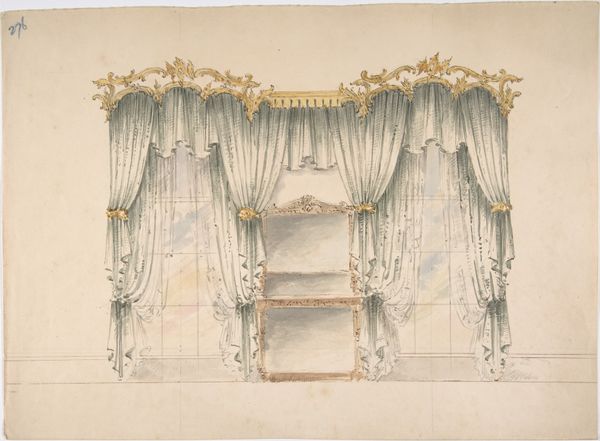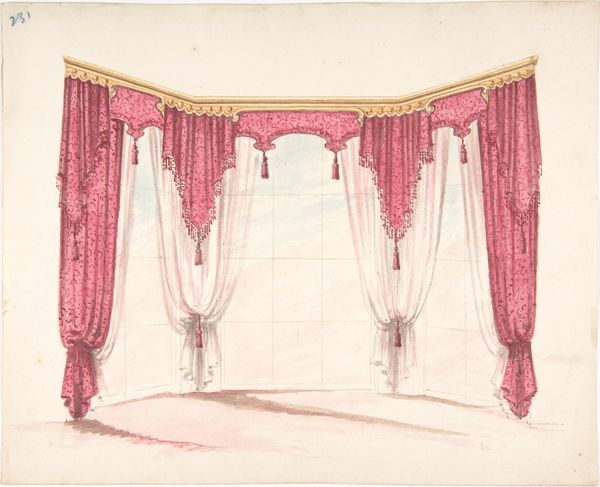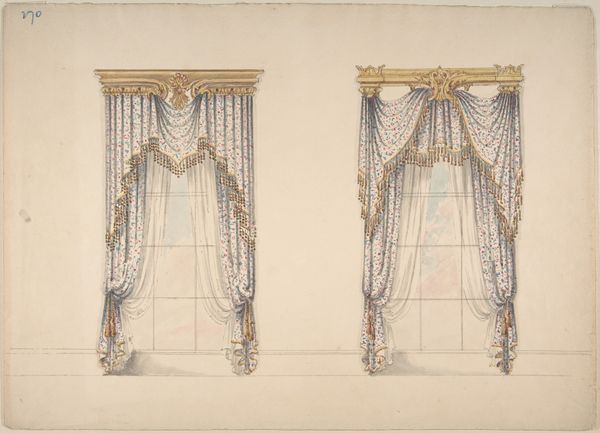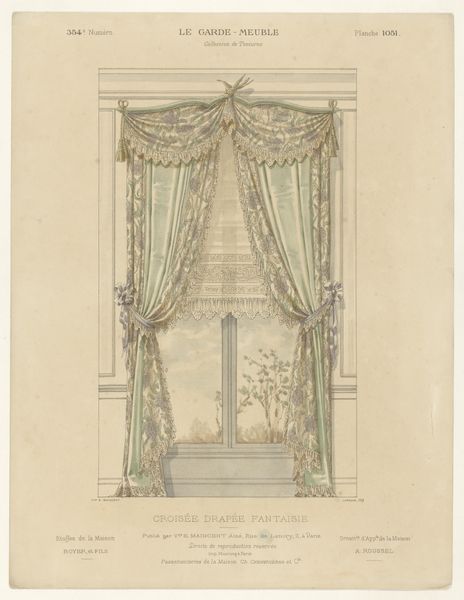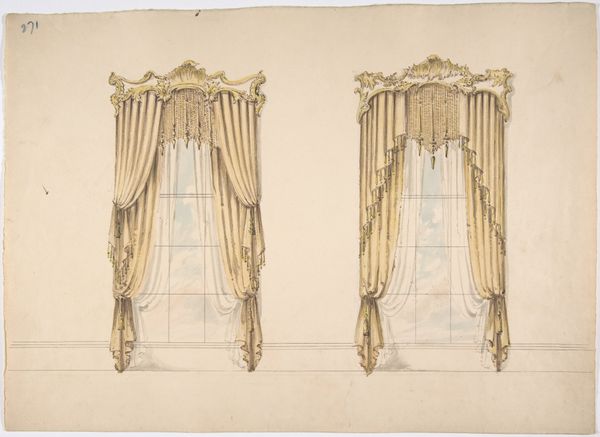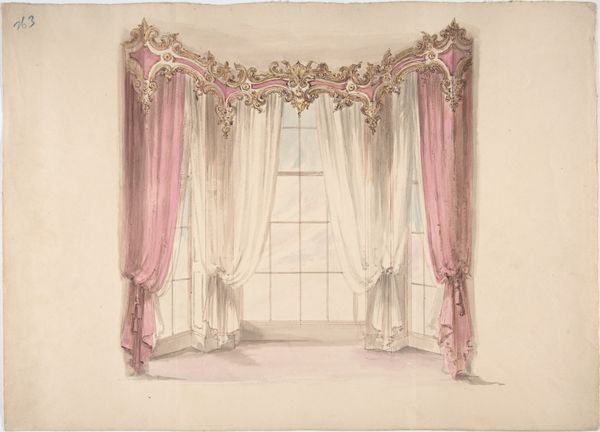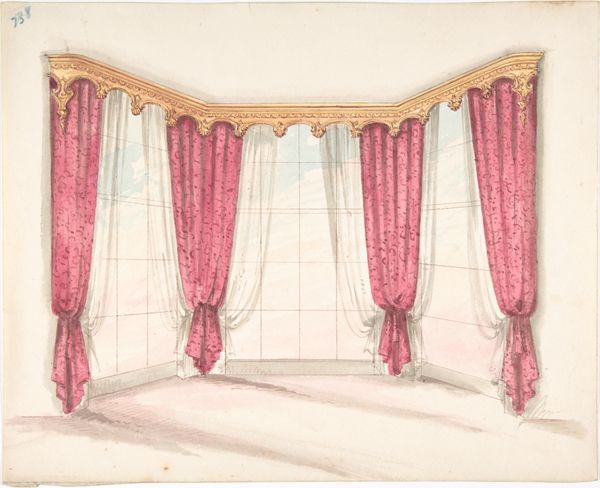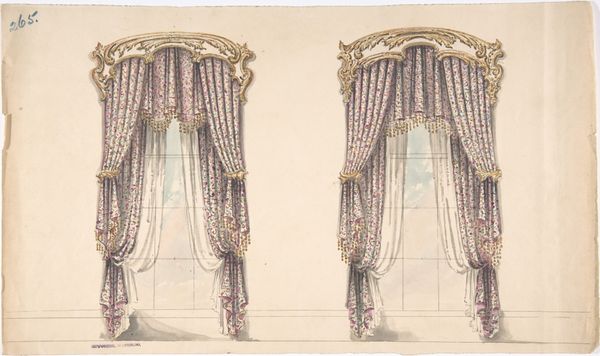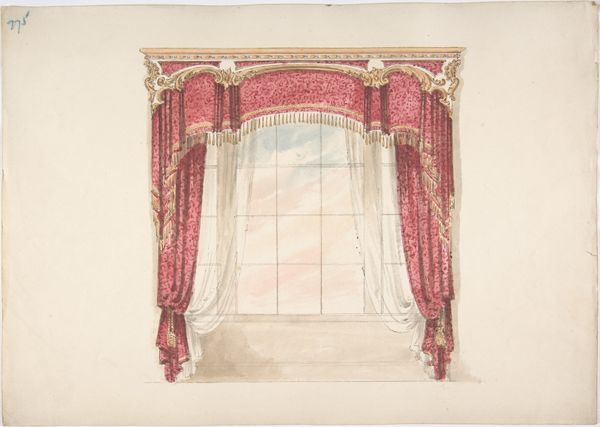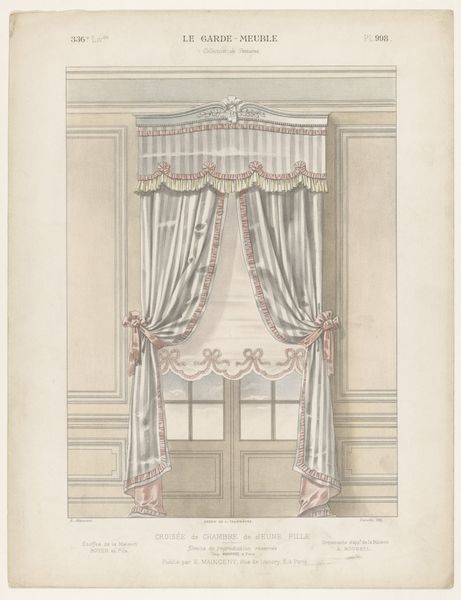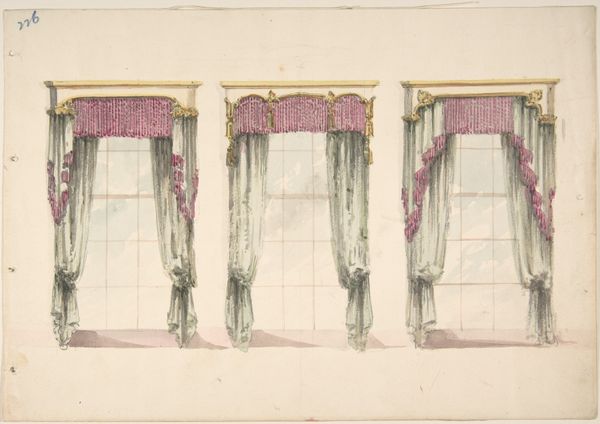
Design for Pink, Gold, Blue and White Curtains with Blue Fringes and a Gold and Wood Pediment 1800 - 1850
0:00
0:00
drawing, print, paper, watercolor
#
drawing
#
neoclacissism
# print
#
paper
#
watercolor
Dimensions: sheet: 8 5/8 x 15 1/16 in. (21.9 x 38.2 cm)
Copyright: Public Domain
Curator: This drawing gives us a glimpse into interior design from the period between 1800 and 1850. The anonymous artist rendered a “Design for Pink, Gold, Blue and White Curtains with Blue Fringes and a Gold and Wood Pediment,” employing watercolor, print and drawing on paper. Editor: It feels so formal, yet comforting, almost like walking into a very carefully constructed stage set. The colour palette is delicate but luxurious; I want to examine that fringe in detail. Curator: Exactly! Think about the labor involved in creating all of that ornamentation. From sourcing the textiles to the hand-crafting of each individual tassel, so many unseen hands were at work. The rise of Neoclassicism meant embracing not just the aesthetic of ancient Greece and Rome, but the methods of production of those ancient societies as well. It also speaks volumes about the hierarchies of labor at that time. Editor: Yes, and beyond that, think of the message that this room design would have conveyed. In a time defined by immense social stratification, consider how gender and class interplay here. Who inhabited such spaces, and how did their identities become intertwined with such displays of wealth and taste? The architecture of the room seems subservient to the curtain itself. Curator: Right. How consumption becomes a language itself. Looking closely, the pediment, seemingly gold and wood, likely incorporates specific carpentry techniques prevalent at the time, showcasing particular woodworking traditions, methods and joinery. These are often markers of geographical location. Editor: And the overall design reinforces the concept of "the gaze." These curtains weren't simply functional; they curated the view both in and out of the windows, defining not just privacy, but who was allowed to observe and be observed. Curator: The interplay between natural light and artificial illumination - note the placement of the candelabras - brings in even more interesting textures and dimensions that shape both experience and labor. Editor: Exactly, a seemingly decorative drawing turns out to hold within itself these reflections of power, labor, and visibility that were fundamental to the structures of the 19th century. Curator: Considering the social and economic narratives woven within this delicate design shifts our perspective, as we appreciate this artwork and the myriad dialogues about process, class and consumption it inspires.
Comments
No comments
Be the first to comment and join the conversation on the ultimate creative platform.
